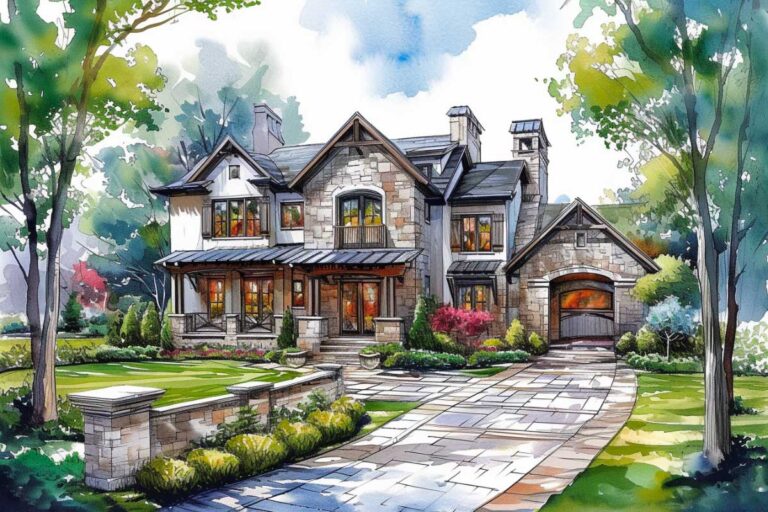Welcome to our blog, where we explore the art of house drawing and the process of creating dream homes on paper. From architectural sketches to detailed floor plans, we delve into the techniques and skills needed to master the art of house drawing. Whether you’re a budding architect or simply passionate about home design, this blog is your guide to bringing your dream homes to life on paper.
The Basics of House Drawing
Drawing a house may seem like a daunting task, especially for beginners. However, with the right techniques and tools, anyone can master the art of house drawing. Whether you’re looking to memorialize art house drawing, create custom house portraits, or simply enjoy the process of drawing homes, this guide will help you get started.
Understanding Perspective and Proportions
One of the fundamental aspects of house drawing is understanding perspective and proportions. This involves visualizing how the elements of the house relate to each other in terms of size and distance. A good grasp of perspective will make your drawings look more realistic and three-dimensional.
Choosing the Right Tools and Materials
To begin your house drawing journey, you’ll need the right tools and materials. Pencils, erasers, rulers, and drawing paper are essential. Consider using a drawing board to provide a stable surface for your work. Experiment with different pencil grades to achieve varying levels of darkness and texture in your drawings.
Sketching Techniques for Beginners
For beginners, it’s important to start with simple sketching techniques. Practice drawing basic shapes and lines to get a feel for how to represent different parts of a house. Pay attention to the proportions of doors, windows, and rooflines. As you gain confidence, you can move on to more complex details.
Creating Architectural Sketches

Once you’ve mastered the basics, you can move on to creating architectural sketches that capture the essence of a house.
Incorporating Details and Textures
Adding details and textures to your house drawing can bring it to life. Consider the materials the house is made of, such as brick, wood, or stucco, and use shading techniques to create depth and texture.
Adding Depth and Dimension
To make your drawing more realistic, focus on creating depth and dimension. Use techniques such as hatching and cross-hatching to add shading and create the illusion of depth in your sketches.
Using Light and Shadow to Enhance the Drawing
Light and shadow play a crucial role in architectural sketches. Pay attention to the direction of light sources and use shading to create realistic shadows, adding depth and drama to your drawings.
House drawing is not just about architecture; it’s an art form that captures the essence and beauty of what makes a place a home. At Memorialize Art, we specialize in transforming your house drawings into unique and cherished pieces of art. By choosing us, you’re not just drawing homes, you’re creating lasting legacies.
Designing Detailed Floor Plans
Moving beyond sketches, designing detailed floor plans is an essential skill for anyone interested in house drawing.
Understanding Scale and Measurements
Floor plans require an understanding of scale and measurements. Learn how to represent real-world dimensions in your drawings, ensuring that the proportions accurately reflect the actual space.
Incorporating Functional Spaces and Flow
When creating a floor plan, consider the functionality and flow of the space. Think about how people will move through the house and how different rooms will be used. This will help you create a practical and well-designed floor plan.
Adding Furniture and Decor Elements to the Plan
To bring your floor plan to life, consider adding furniture and decor elements. This will help visualize how the space will be furnished and give a sense of the overall ambiance of the house.
Conclusion
House drawing is a skill that can be learned and perfected with practice and dedication. Whether you’re interested in creating customized memorial art for homes or simply enjoy the art of drawing, mastering the techniques outlined in this guide will help you bring your dream homes to life on paper.









